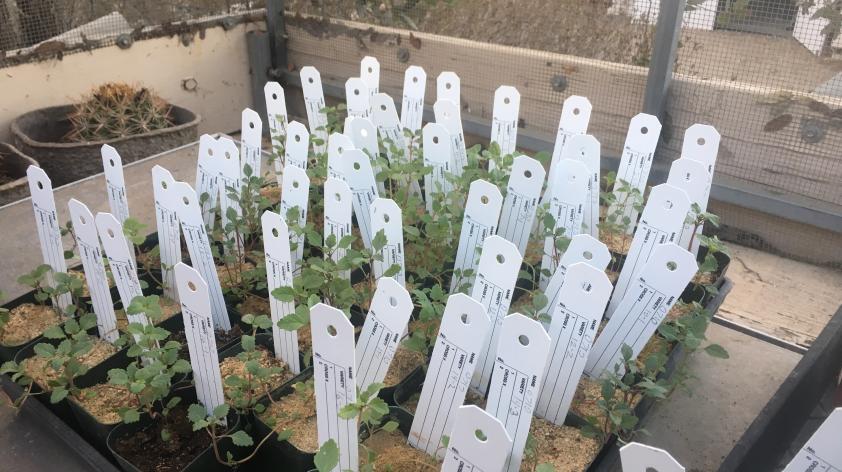
San Diego Thornmint – Saving the Species
Many of our San Diego County endangered plants face serious hurdles on their road to recovery. I have personally seen a decline in many of our endangered plant populations, usually the result of invasive species. Many invasives can colonize a site in a single season. Native habitat can quickly become a sea of invasive grasses and forbs, with little to no native plant life.
Some of the most fragile populations are our small annual plants. Acanthomintha ilicifolia is known as San Diego thornmint, and is an annual herb in the mint family (Lamiaceae). It is found only in San Diego County, with a few historic occurrences in northern Baja. The status of the Mexican populations is unknown. The species is restricted to a specific soil type known as clay lenses, which are pockets of gabbro or calcareous clay soils dotted throughout coastal sage scrub, chaparral, and native grasslands. It’s thought that more than 90% of this habitat has been destroyed in the past century as a result of human development. The remaining undeveloped habitat is often infested with weeds.
Many thornmint populations are small, and all are threatened by invasive plant species. Several populations haven’t been seen in a number of years, and overall the species appears to be in decline. Invasive grasses and non-native forbs can completely cover clay lenses, leading to reduced light, water competition, and the development of thatch. When annual invasive grasses die at the end of each season, they fall to the ground, often interweaving and creating a cover that persists for many years. Over several seasons, this layer of dead grass becomes thicker, completely covering the ground and stopping any light from reaching the surface. This thatch layer prohibits native plants from germinating, and can also lead to increased fire-frequency. Invasive species have spread to every corner of our county, but there is still hope!
We can help! There are still at least 55 known populations of Acanthomintha ilicifolia in San Diego County, and the species is now protected as a state and federally listed endangered species. Through seed collections and seed bulking we can help restore populations in the wild. Working with many different land managers in 2017, we made seed collections from 4 different San Diego thornmint populations from across the county.
The Plant Conservation Division is working with The City of San Diego and the Friends of Mission Trails to stabilize and increase a population in Mission Trails Regional Park. We made a seed collection from this population last summer, and Tobin Weatherson germinated seeds from this population at the San Diego Zoo Safari Park. He will be growing these plants to maturity in order to collect their seeds for reintroduction back into the wild.
Simultaneously, the site of the wild population is being treated to control the weeds and any thatch has been removed. With the seeds that we produce, the range of the wild population can be expanded and stabilized. The seed can also be used to research seed introduction methods, determining when the best time of year is to place seed into the wild, and how many seeds are needed to effectively boost populations.
Tobin is growing several other seed populations this spring. Another population of thornmint is destined for a similar project in the south of the county, and he is also growing several vernal pool species to collect seeds for a vernal pool restoration project. To read more about these species and some of the other projects we’re working on, click the link below and read my other blogs!
http://institute.sandiegozoo.org/science-blog/by-author/6187













